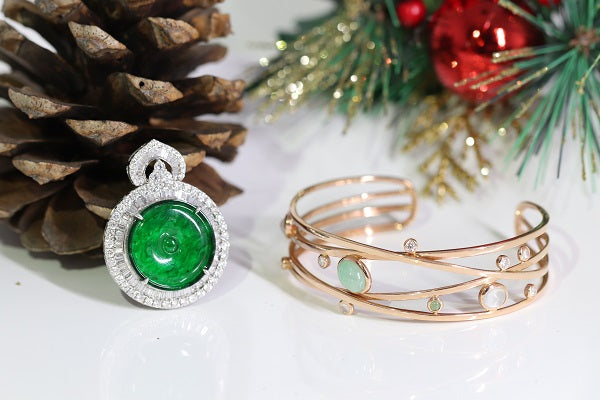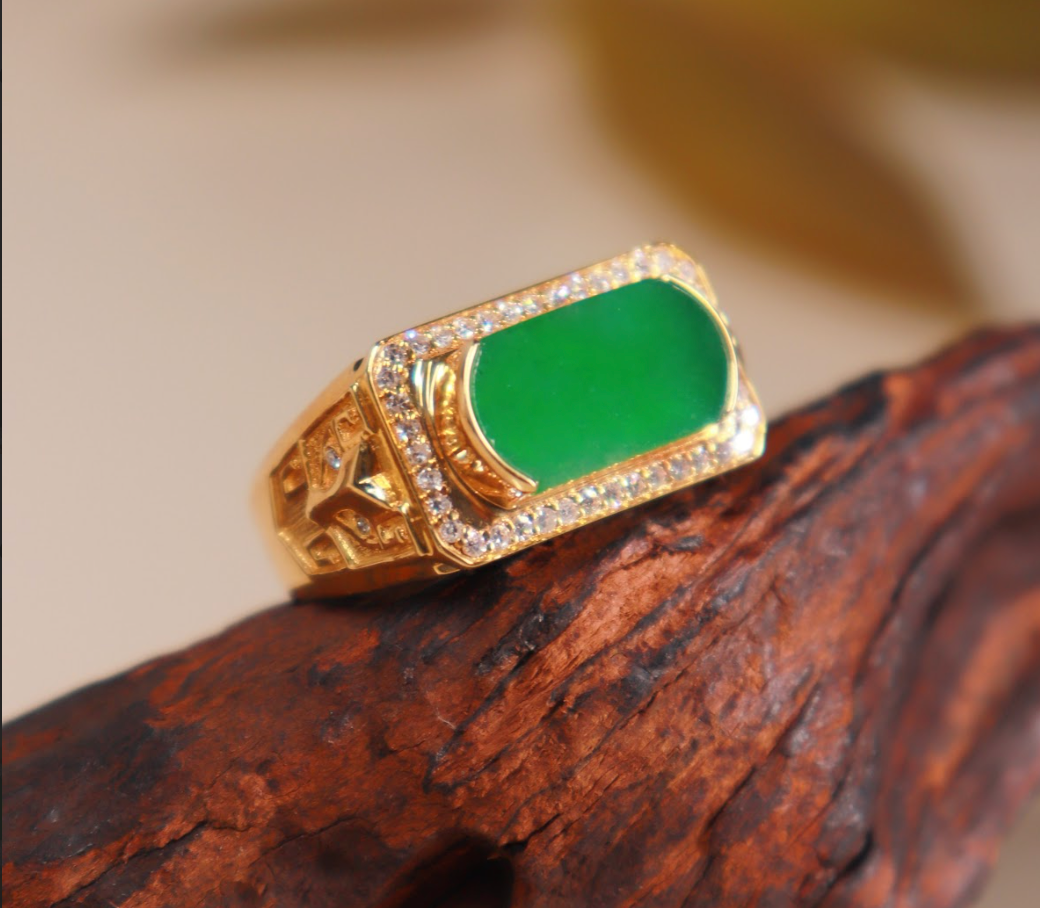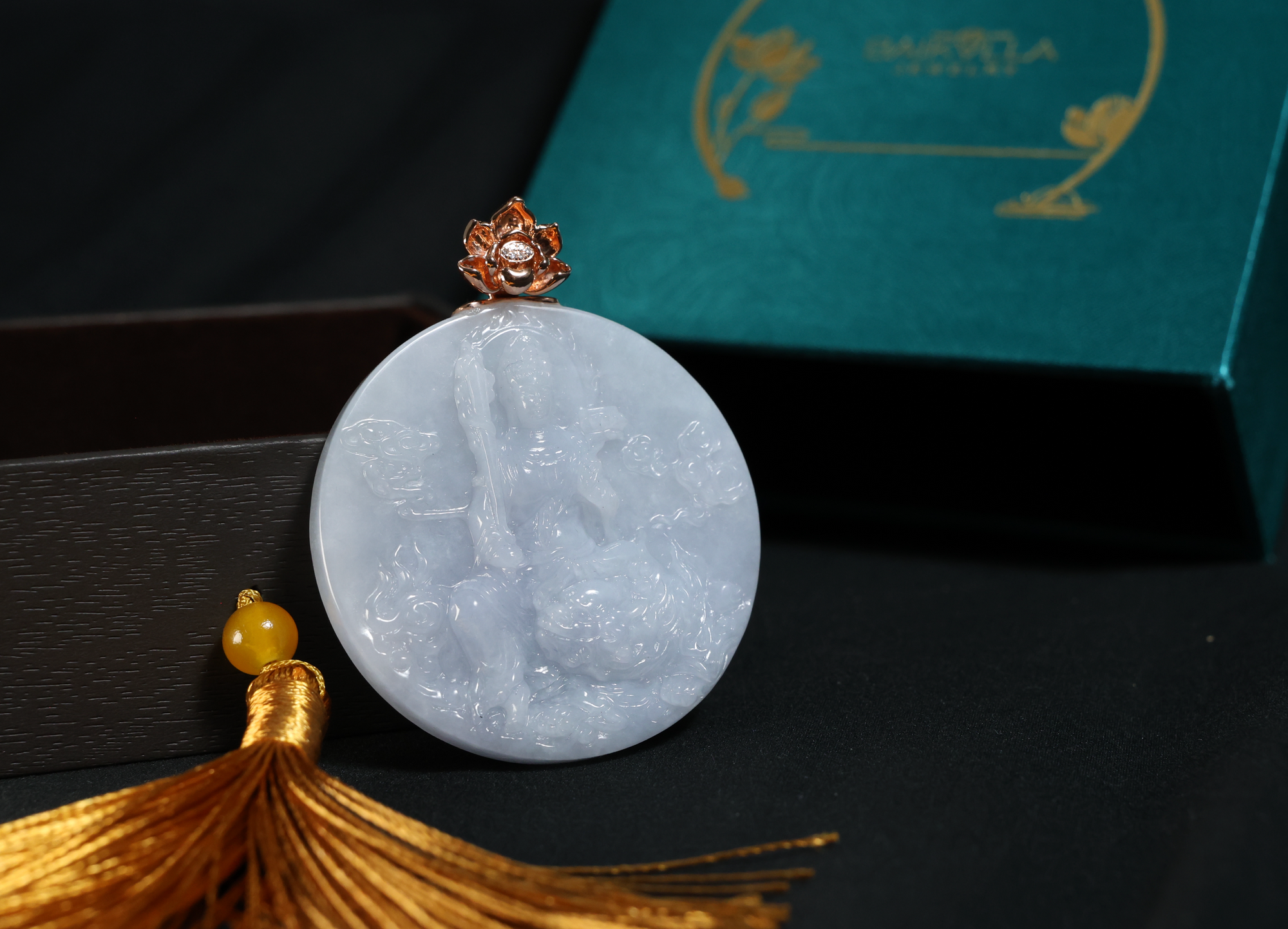The exquisite, elegant, and vibrant Jade jewelry has become very popular and trendy that you may find the models on the ramp walk wearing it. Jade jewelry is quite versatile and can be worn for formal as well as daily use. But do you know what to consider while shopping for Jade jewelry or other precious gemstones? Scroll down further to find out! This blog is a Jade jewelry buying guide to help you pick the best Jade jewelry pieces and wear them with style.
Types Of Jade
There are two types of Jade jewelry pieces available: Jadeite and Nephrite, and there’s a huge difference between the two. Jadeite is a more expensive and rare type of stone and has more color variations. In comparison, nephrite is found in limited colors, i.e., green, red, white, or yellow. If you do not shop from a reputable jewelry store, they might try to sell you nephrite, trying to pass it off as jadeite. Be very careful about the type. Even if the two gemstones look the same, their mineral compositions might be different. Jade is slightly more hard on the Mohs hardness scale than the nephrite. Consult this guide to learn extensively about imperial jade.

Type A, B & C Jade
Besides the nephrite and jadeite, there are three more different Jade types you can find in jewelry. These types determine the treatment of the stone.
Type A is natural Jade and is the most expensive one. It only receives a wax treatment to fill the stone’s irregularities and give it a lustrous touch. The wax treatment doesn’t affect the natural color of type A jade.
Type B Jade jewelry is bleached by Sulfuric acid and then given wax treatment. The downside of type B is that the acid makes the stone brittle and deteriorates over time.
And type C jade jewelry goes through the same treatment as type B, but it also gets dye treatment. The purpose of dyeing is to enhance the color, but it can wear off in time.
Mistakes To Avoid While Buying Jade Jewelry
When it comes to buying Jade jewelry, you might come across jewelry shops that lure you into buying something that is not real Jade. It is due to that some gemstones are wrongfully labeled as Jade; if you see the name “garnet Jade” or African Jade,” please know that the stone is green grossularite garnet, and it has nothing to do with authentic Jade. “Amazon Jade” is, in fact, the amazonite, and on the other hand, “American Jade” is vesuvianite. “Bowenite Jade” or “Serpentine Jade” is actually serpentine. “Honan Jade” is a quartz substitute, and ‘Mexican Jade” is green-dyed calcite. The “Indian Jade” is aventurine quartz. “Korean Jade” is a simple glass, and “Manchurian Jade” is soapstone. Last but not least, be cautious of “Oregon Jade,” which is green jasper and “Soochow Jade,” “South African Jade,” “Transvaal Jade” are all varieties of the above stones and not Jade.
You can save the above information as a bookmark or something if it looks like too much to remember so that you are not scammed into buying a fake Jade.
We at Baikalla Jewelry sell authentic and real Burmese Jade jewelry pieces. Check out our collection of Jadeite rings, necklaces, genuine jade earrings, as well as authentic Jade bracelets for sale. With so much fake Jade being sold on the market. We want to provide a way for you to experience real, authentic jadeite and gemstone jewelry that you will love and live with.
Knowing the difference between these two types of jade will help you make a more informed decision when purchasing jade jewelry or artifacts. We hope this was helpful. :)
Keep these tips in mind next time you're jade shopping! And if you're still unsure, consult with a professional. They will be able to tell the difference with ease. Thanks for reading!


